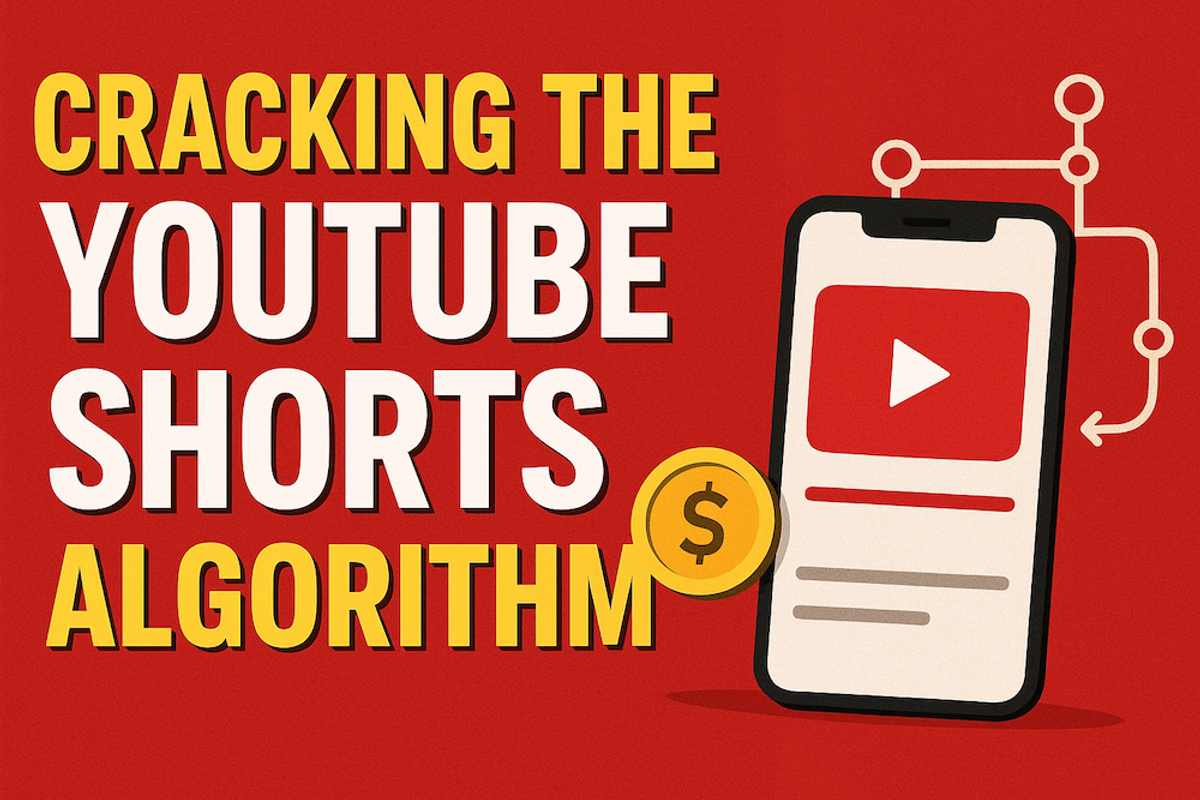
Cracking the YouTube Shorts Algorithm: What Brands and Creators Need to Know
10/19/2025
If your Shorts are getting stuck at 200 views, you’re not alone. The YouTube Shorts algorithm has left many creators scratching their heads — but once you understand the why, it becomes much easier to play the game strategically.
Let’s unpack what’s really going on.
🎰 The “Seed Audience Lottery”
When you upload a Short, YouTube doesn’t immediately blast it to millions. Instead, it tests your video with a small “seed audience” — a sample group of viewers who might be interested in your content.
This testing phase is part of a machine learning model known as a multi-armed bandit algorithm (a real AI strategy used by Google, Meta, and Netflix).
The idea is simple:
- Explore: YouTube tries your video with a small, random audience to measure click-through rate (CTR), watch time, and swipe-aways.
- Exploit: If your video performs well, YouTube “doubles down” — promoting it to larger and larger audiences.
If it doesn’t perform well? Your video’s “arm” loses, and the algorithm moves on to other videos that are delivering better engagement.
That’s why some Shorts skyrocket — and others flatline within hours.
⚙️ What the Algorithm Really Measures
The Shorts system isn’t random. It’s measuring a few key engagement signals:
- CTR (Click-Through Rate): Do people stop scrolling and watch your Short?
- Retention: How long do they stay?
- Swipe-Aways: How quickly do they abandon it?
- Replays and Shares: Do they loop or share it?
A Short that hooks viewers in the first 1–2 seconds and maintains attention has a much higher chance of “winning” the Explore phase.
📈 When the “Tournament” Begins
Think of the Shorts algorithm like a tournament bracket:
- Round 1: 50 test impressions.
- Round 2: 200 impressions to a slightly wider audience.
- Round 3: 500–2,000 impressions, and so on.
If your Short keeps winning, YouTube keeps promoting it. If it loses a round, it might get a few more test views before dying off.
You can even see this happen in your analytics: views will spike in “stair-step” patterns as each test round begins and ends.
🧠 Strategic Takeaways for Brands & Creators
Here’s how to stack the odds in your favor:
Quantity + Quality Wins.
Each Short is a new ticket in the algorithmic lottery. The more consistently you post, the more chances you have to win.
Optimize the Hook.
The first 1–2 seconds decide everything. Use motion, captions, and a clear visual hook that stops the scroll.
Stay Consistent with Niche.
The algorithm learns your audience over time. Jumping topics confuses it — and hurts your odds in the Explore phase.
Don’t Spam.
Uploading 10 Shorts a day can look like spam and hurt performance. Gradually increase volume to avoid throttling.
Use Data, Not Emotion.
A Short that “fails” still gives you data. Look for retention drops, hook performance, and compare winners vs. losers.
🚀 Why This Matters for Businesses
For brands, Shorts represent one of the most efficient organic reach channels available right now. But it’s not about luck — it’s about data-driven iteration.
At StackToSale, we help creators and companies systemize this process:
- Rapid Shorts testing
- Hook optimization
- Retention analysis
- AI-powered creative iteration
Winning Shorts don’t happen by accident — they’re engineered through consistent testing, insights, and refinement.
💡 Final Thought
The Shorts algorithm isn’t out to get you — it’s just ruthlessly efficient. Think of it as a data scientist, not a critic. Feed it consistent, compelling content, and it’ll reward you exponentially.
If you’re ready to build a repeatable Shorts system that actually converts, StackToSale can help.
👉 Book a free Shorts strategy session today.